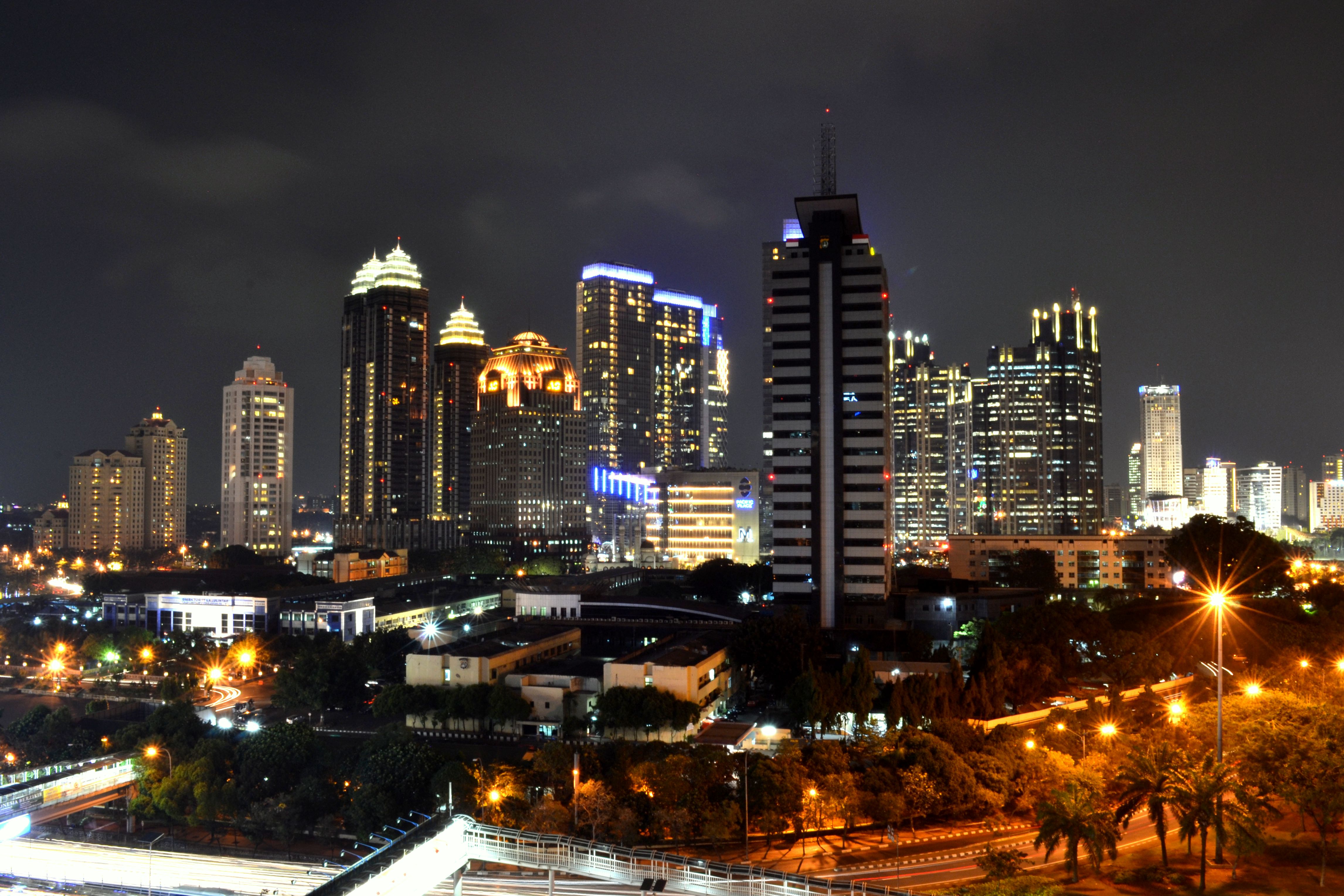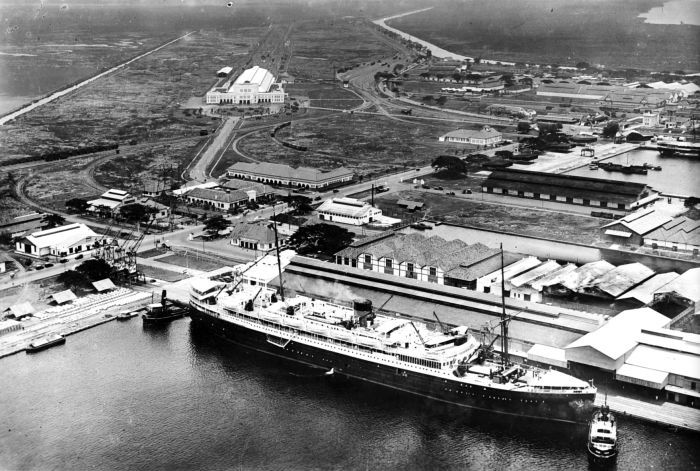|
Jakarta Kota Railway Station
Jakarta Kota Station (, station code: JAKK) is a railway station, located in the old city core of Kota, Jakarta, Indonesia. The station was named ''Batavia Zuid'' (or ''South Batavia'') until the beginning of the 20th century. The station was also popularly known as the Beos Station as an abbreviation of the station's former owner ''Bataviasche Oosterspoorweg Maatschapij'' (BOS). Jakarta Kota Station serves as a main station, along with Gambir Station, Jatinegara Station, and Pasar Senen Station, for several intercity train lines across Java island. This station also serves two of the five KRL Commuterline train lines, which operate in the Jakarta metropolitan area. History The first station was built in 1887 by the BOS, a private railway company. The station was named ''Batavia Zuid'' (''South Batavia'') to distinguish it from the older ''Batavia Noord'' (''North Batavia'') station (owned by the Nederlandsch-Indische Spoorweg Maatschappij, another private railway company), ... [...More Info...] [...Related Items...] OR: [Wikipedia] [Google] [Baidu] |
KRL Commuterline
KRL Commuterline, or commonly known as Commuterline, is a commuter rail system for Greater Jakarta in Indonesia. It was previously known as KRL Jabodetabek. It is operated by PT KAI Commuter Indonesia (KAI Commuter/KCI), a subsidiary of the Indonesian national railway company PT Kereta Api Indonesia (KAI). The rail system uses rolling stock of rapid transit standard and operates at high frequency with a minimum headway. In 2019, the average number of KRL users per day reaches average of 1.04 million, with the record of the highest number of users served in a day being 1,154,080. "KRL" itself stands for "Kereta Rel Listrik" (literally "electric rail train" or "electric railcar"), a term for an electric multiple unit train. History Colonial era In 1917, a plan to introduce electrified railway in Batavia was made by Dutch colonial railway company Staatsspoorwegen. A railway between Tanjung Priok to ''Meester Cornelis'' (Jatinegara) was the first line to be electrified. The con ... [...More Info...] [...Related Items...] OR: [Wikipedia] [Google] [Baidu] |
Jabodetabek
The Jakarta metropolitan area or Greater Jakarta, known locally as Jabodetabek (an acronym of Jakarta–Bogor–Depok–Tangerang–Bekasi), and sometimes extended to Jabodetabekjur (with the acronym extended to include part of Cianjur Regency), or Jabodetabekpunjur (further extended to include Puncak and the Cipanas district), is the most populous metropolitan area in Indonesia. It includes the national capital (Jakarta Special Capital Region, as the core city) as well as five satellite cities and three complete regencies. The original term "Jabotabek" dated from the late 1970s and was revised to "Jabodetabek" in 1999 when "De" (for "Depok") was inserted into the name following its formation. The term "Jabodetabekjur" or "Jabodetabekpunjur" was legalised on the Presidential Regulation Number 54 of 2008, although the name Jabodetabek is more commonly used. The area comprises Jakarta Special Capital Region and parts of West Java and Banten provinces, specifically the three rege ... [...More Info...] [...Related Items...] OR: [Wikipedia] [Google] [Baidu] |
Art Deco
Art Deco, short for the French ''Arts Décoratifs'', and sometimes just called Deco, is a style of visual arts, architecture, and product design, that first appeared in France in the 1910s (just before World War I), and flourished in the United States and Europe during the 1920s and 1930s. Through styling and design of the exterior and interior of anything from large structures to small objects, including how people look (clothing, fashion and jewelry), Art Deco has influenced bridges, buildings (from skyscrapers to cinemas), ships, ocean liners, trains, cars, trucks, buses, furniture, and everyday objects like radios and vacuum cleaners. It got its name after the 1925 Exposition internationale des arts décoratifs et industriels modernes (International Exhibition of Modern Decorative and Industrial Arts) held in Paris. Art Deco combined modern styles with fine craftsmanship and rich materials. During its heyday, it represented luxury, glamour, exuberance, and faith in socia ... [...More Info...] [...Related Items...] OR: [Wikipedia] [Google] [Baidu] |
Frans Johan Louwrens Ghijsels
Frans Johan Louwrens Ghijsels (8 September 1882 in Tulungagung – 2 March 1947 in Overveen, Bloemendaal) was a Dutch architect and urban planner who worked in the Netherlands and the Dutch Indies. Ghijsels was the founder of AIA, the biggest architecture consultant in the Dutch Indies. He was one of the instrumental architects in developing a Colonial architecture of Indonesia, modern style characteristic of the Dutch Indies. Biography In the year 1903 Ghijsels studied at the Delft University of Technology, polytechnic in Delft, where some of his fellow students included several future East Indies architects, Thomas Karsten and Henri Maclaine Pont among them. After his academic study in 1909, his first appointment was as a government architectural supervisor in Amsterdam under the firm of GA van Arkel (1910). In the same ,year he married Johanna Elisabeth Antonia de Regt in Rotterdam. By the end of September 1910, Ghijsels was accepted for the post of engineer by the Departmen ... [...More Info...] [...Related Items...] OR: [Wikipedia] [Google] [Baidu] |
Landmark
A landmark is a recognizable natural or artificial feature used for navigation, a feature that stands out from its near environment and is often visible from long distances. In modern use, the term can also be applied to smaller structures or features, that have become local or national symbols. Etymology In old English the word ''landmearc'' (from ''land'' + ''mearc'' (mark)) was used to describe a boundary marker, an "object set up to mark the boundaries of a kingdom, estate, etc.". Starting from approx. 1560, this understanding of landmark was replaced by a more general one. A landmark became a "conspicuous object in a landscape". A ''landmark'' literally meant a geographic feature used by explorers and others to find their way back or through an area. For example, the Table Mountain near Cape Town, South Africa is used as the landmark to help sailors to navigate around southern tip of Africa during the Age of Exploration. Artificial structures are also sometimes built to a ... [...More Info...] [...Related Items...] OR: [Wikipedia] [Google] [Baidu] |
Cultural
Culture () is an umbrella term which encompasses the social behavior, institutions, and Social norm, norms found in human Society, societies, as well as the knowledge, beliefs, arts, laws, Social norm, customs, capabilities, and habits of the individuals in these groups.Tylor, Edward. (1871). Primitive Culture. Vol 1. New York: J.P. Putnam's Son Culture is often originated from or attributed to a specific region or location. Humans acquire culture through the learning processes of enculturation and socialization, which is shown by the diversity of cultures across societies. A cultural norm codifies acceptable conduct in society; it serves as a guideline for behavior, dress, language, and demeanor in a situation, which serves as a template for expectations in a social group. Accepting only a monoculturalism, monoculture in a social group can bear risks, just as a single species can wither in the face of environmental change, for lack of functional responses to the change. Thus ... [...More Info...] [...Related Items...] OR: [Wikipedia] [Google] [Baidu] |
Historical
History (derived ) is the systematic study and the documentation of the human activity. The time period of event before the invention of writing systems is considered prehistory. "History" is an umbrella term comprising past events as well as the memory, discovery, collection, organization, presentation, and interpretation of these events. Historians seek knowledge of the past using historical sources such as written documents, oral accounts, art and material artifacts, and ecological markers. History is not complete and still has debatable mysteries. History is also an academic discipline which uses narrative to describe, examine, question, and analyze past events, and investigate their patterns of cause and effect. Historians often debate which narrative best explains an event, as well as the significance of different causes and effects. Historians also debate the nature of history as an end in itself, as well as its usefulness to give perspective on the problems of the p ... [...More Info...] [...Related Items...] OR: [Wikipedia] [Google] [Baidu] |
Merak, Banten
Port of Merak is a seaport located in the Pulo Merak District of the city of Cilegon, Banten, on the northwestern tip of Java, Indonesia. The port and district are named after the green peafowl, which once lived in the region, but now only lives in the nearby Ujung Kulon National Park. The port is connected to Jakarta via the Jakarta-Merak Toll Road and is also connected to the Bakauheni port which is located at the south of the Trans-Sumatran Highway. History In 1883, the original settlement was completely destroyed by a series of tsunamis generated by the eruption of the Krakatoa volcano in the Sunda Strait. The largest wave at Merak was estimated to be at least 41 m (135 ft) high. Approximately 2,700 people lost their lives, including virtually all of the town's inhabitants at that time. Features A large thermal electric power plant is located close to Merak where coal barges handle large quantities of coal. A new LPG jetty handles liquid gases for distrib ... [...More Info...] [...Related Items...] OR: [Wikipedia] [Google] [Baidu] |
Tanjung Priok
Tanjung Priok is a district of North Jakarta, Indonesia. It hosts the western part of the city's main harbor, the Port of Tanjung Priok (located in Tanjung Priok District and Koja District). The district of Tanjung Priok is bounded by Laksamana Yos Sudarso Tollway and Sunter River canal to the east, by Kali Japat, Kali Ancol, and the former Kemayoran Airport to the southwest, by Sunter Jaya Road and Sunter Kemayoran Road to the south, and by Jakarta Bay to the north. History Before human development, the coastal area of what is now Tanjung Priok was an area of brackish water with swamp and mangrove forest. The old harbor of Jakarta During the colonial era, Batavia at first relied on the Sunda Kelapa harbor area. This meant that Batavia had a harbor system like many others cities. I.e. an anchorage at sea at some distance from the city, and a city harbor where smaller ships could attach to a quay. It meant that big ships like the Dutch East Indiamen and later ships safely anc ... [...More Info...] [...Related Items...] OR: [Wikipedia] [Google] [Baidu] |
Bogor
Bogor ( su, , nl, Buitenzorg) is a city in the West Java province, Indonesia. Located around south of the national capital of Jakarta, Bogor is the 6th largest city in the Jakarta metropolitan area and the 14th overall nationwide. Estimasi Penduduk Menurut Umur Tunggal Dan Jenis Kelamin 2014 Kementerian Kesehatan The city covers an area of 118.50 km2, and it had a population of 950,334 in the 2010 Census and 1,043,070 in the 2020 Census.Badan Pusat Statistik, Jakarta, 2021. The official estimate for mid 2022 is 1,099,422. Bogor is an important economic, scientific, cultural, and tourist center, as well as a mountain resort. During the |
Railway Track
A railway track (British English and UIC terminology) or railroad track (American English), also known as permanent way or simply track, is the structure on a railway or railroad consisting of the rails, fasteners, railroad ties (sleepers, British English) and ballast (or slab track), plus the underlying subgrade. It enables trains to move by providing a dependable surface for their wheels to roll upon. Early tracks were constructed with wooden or cast iron rails, and wooden or stone sleepers; since the 1870s, rails have almost universally been made from steel. Historical development The first railway in Britain was the Wollaton Wagonway, built in 1603 between Wollaton and Strelley in Nottinghamshire. It used wooden rails and was the first of around 50 wooden-railed tramways built over the next 164 years. These early wooden tramways typically used rails of oak or beech, attached to wooden sleepers with iron or wooden nails. Gravel or small stones were packed around the s ... [...More Info...] [...Related Items...] OR: [Wikipedia] [Google] [Baidu] |


_interior.jpg)



.jpg)

